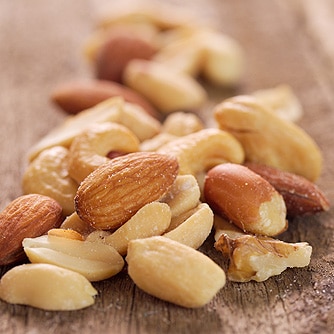Researchers at Brigham and Women’s Hospital have discovered that eating more nuts correlates to lower levels of inflammatory biomarkers, which are certain telltale proteins. The team performed a data cross-sectional analysis from the Nurses’ Health Study of over 120,000 female registered nurses and from a Health Professionals Follow-Up Study of over 50,000 male health professionals. A particular study of over 5,000 people used diet questionnaires and studied the biomarkers in blood samples of the participants. Those included interleukin 6 (IL6), tumor necrosis factor receptor 2 (TNFR2), and C-reactive protein (CRP).
Adjustments were made for medical history, age, lifestyle and additional variables. It was found that participants who ate five or more servings of nuts each week had a lower level of IL6 and CRP, compared to those people who almost never or hardly ever ate nuts. Those who ate three servings each week of nuts instead of processed meat, red meat, refined grains, or eggs had a significantly lower level of CRP and IL6. Tree nuts and peanuts contain healthy components that include fiber, magnesium, antioxidants, L-arginine, and unsaturated fatty acids.
Other studies have continually supported nuts and their protective role against such disorders as type 2 diabetes and cardiovascular disease. Inflammation is a key in the development of such diseases, and nuts exert beneficial effects by reducing systemic inflammation. These facts are according to Ying Bao, MD, ScD, a noted epidemiologist in the BWH Channing Division of Network Medicine. Bao stated that much remains unknown about how diet influences inflammation and the risk of disease, but their study supports the overall healthful role of nuts. She suggests that nuts are beneficial to reducing inflammation and protecting against cardiometabolic disorders.




